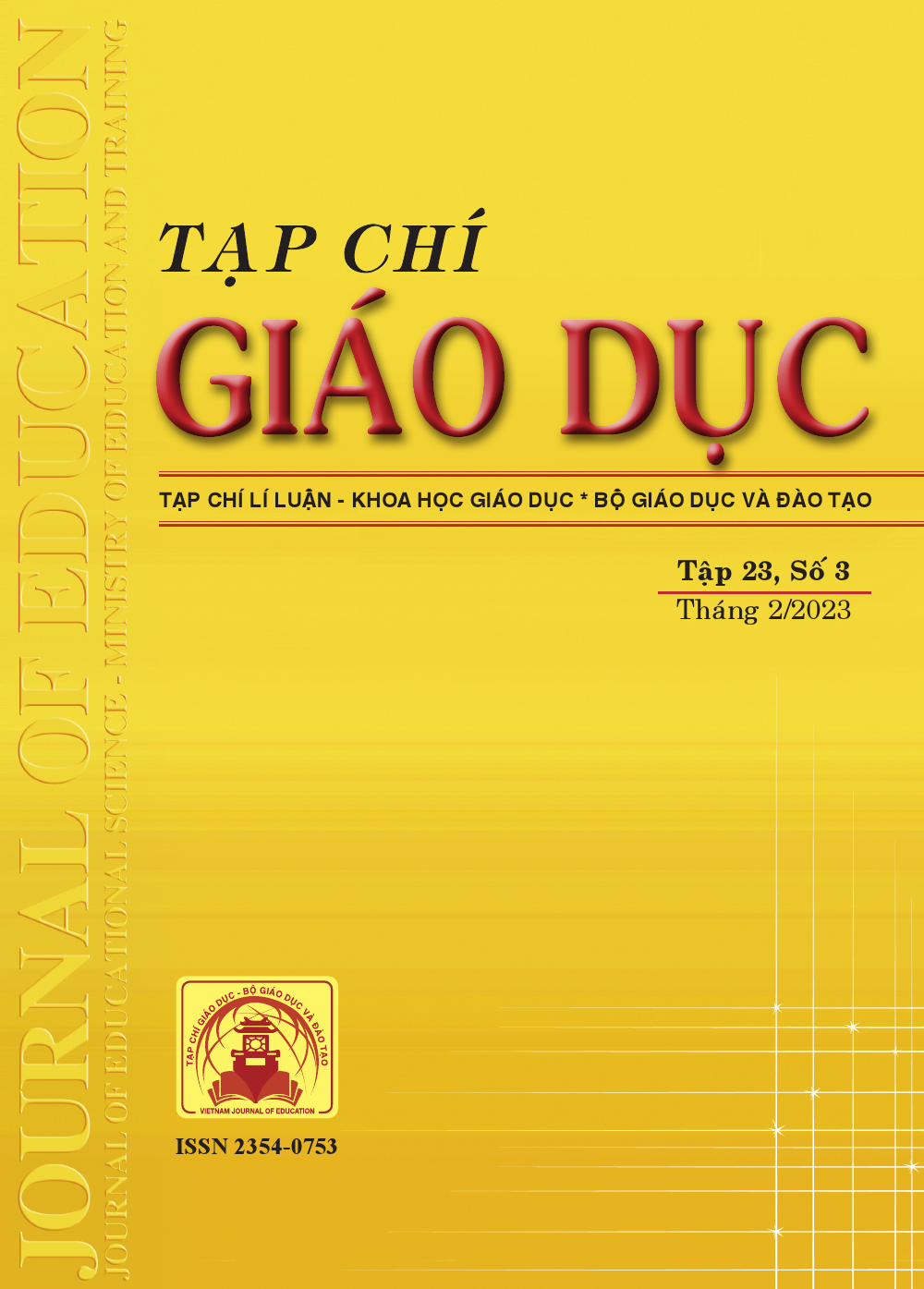Tổ chức hoạt động học theo mô hình “Lớp học đảo ngược” với sự hỗ trợ của Google Classroom trong dạy học môn Khoa học tự nhiên
Tóm tắt
Integrating the flipped classroom model and online teaching appropriately and with effective management methods, teaching and learning will become easier. This article designs learning activities according to the flipped classroom model in teaching Natural Sciences with the support of Google Classroom through 2 specific illustrations. The research results show that the 4 step guideline for learning activity organization and implementation in Dispatch No 5512/BGDĐT-GDTrH is in accordance with the flipped classroom model. As a free access teaching organization application, Google Classroom is suitable for deploying learning activities according to the flipped classroom model in teaching Natural Sciences. The implementation of this model learning activity with the support of Google Classroom contributes to promoting the digital transformation process in teaching, detecting the advantages and disadvantages in the implementation process to offer appropriate solutions to bring about the greatest results and effectiveness for this learning approach.
Tài liệu tham khảo
Tài liệu tham khảo
Baker, J. W. (2016). The origins of “the classroom flip”. In Proceedings of the 1st annual higher education flipped learning conference, Greeley, Colorado.
Bauer‐Ramazani, C., Graney, J. M., Marshall, H. W., & Sabieh, C. (2016). Flipped learning in TESOL: Definitions, approaches, and implementation. Tesol Journal, 7(2), 429-437.
Bộ GD-ĐT (2020). Công văn số 5512/BGDĐT-GDTrH ngày 18/12/2020 về hướng dẫn xây dựng và tổ chức thực hiện kế hoạch giáo dục của trường theo Thông tư 32.
Brinks, L. R. (2014). Flip it! Strategies for the ESL classroom. Ann Arbor: University of Michigan Press.
Creswell, J. W. (2012). Educational research planning, conducting, and evaluating quantitative and qualitative research (4th ed). Pearson.
Fell Kurban, C. (2019). Designing effective, contemporary assessment on a flipped educational sciences course. Interactive Learning Environments, 27(8), 1143-1159.
Kostka, I., & Marshall, H. W. (2017). Flipped learning in TESOL: Present, past and future. Applications of CALL theory in ESL and EFL environments. Hershey, PA: IGI Global.
Kurban, C. F. (2019). Designing effective, contemporary assessment on a flipped educational sciences course. Interactive Learning Environments, 27(8), 1143-1159.
Lage, M. J., Platt, G. J., & Treglia, M. (2000). Inverting the classroom: A gateway to creating an inclusive learning environment. Journal of Economic Education, 31(1), 30-43.
Marshall, H. (2014). Three reasons to flip your ESL classroom. TESOL Connections.
Nguyễn Thế Dũng (2015). Nghiên cứu sử dụng mô hình lớp học đảo ngược: Những khó khăn, thách thức và khả năng ứng dụng. Tạp chí Khoa học, Trường Đại học Sư phạm Hà Nội, 60(8D), 85-92.
Ninh Thị Ngọc Diệp, Lê Thị Ngọc Anh (2021). Dạy học theo nhóm nhỏ kết hợp mô hình “lớp học đảo ngược” nhằm phát triển năng lực tự học cho học sinh trong dạy học sinh học ở trường phổ thông. Tạp chí Giáo dục, 502, 36-40.
Sargent, J., & Casey, A. (2020). Flipped learning, pedagogy and digital technology: Establishing consistent practice. European Physical Education Review, 26(1), 70-84.
Thủ tướng Chính phủ (2022). Quyết định số 131/QĐ-TTg ngày 25/01/2022 phê duyệt Đề án “Tăng cường ứng dụng công nghệ thông tin và chuyển đổi số trong giáo dục và đào tạo giai đoạn 2022-2025, định hướng đến năm 2030”.
Tải xuống
Đã Xuất bản
Cách trích dẫn
Số
Chuyên mục
Giấy phép

Tác phẩm này được cấp phép theo Ghi nhận tác giả của Creative Commons Giấy phép quốc tế 4.0 .












